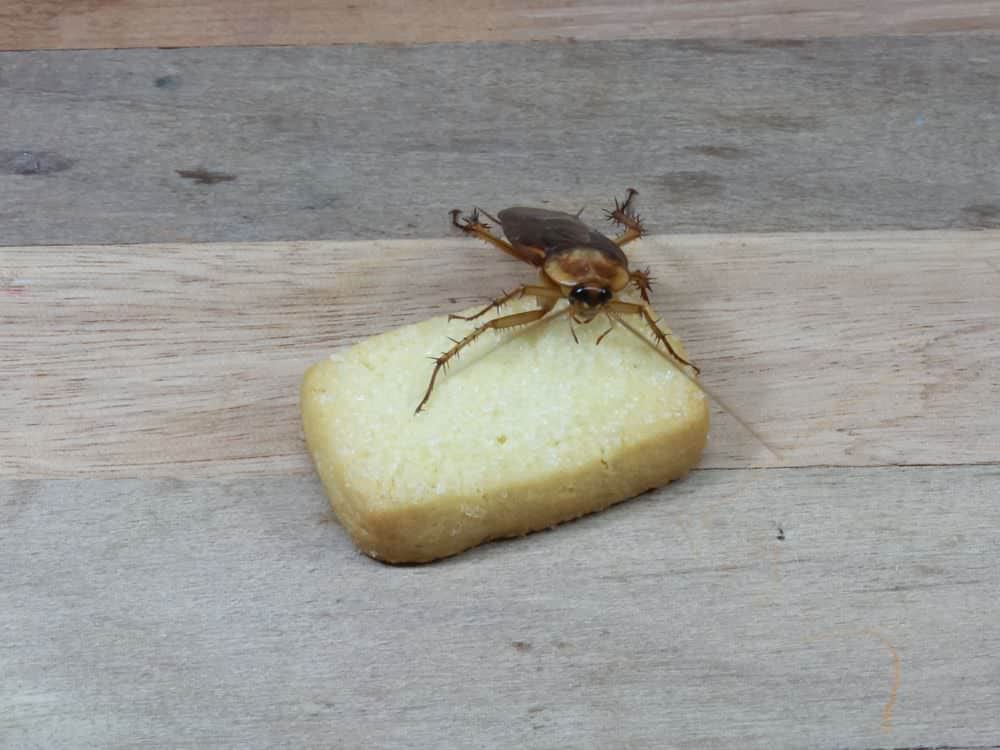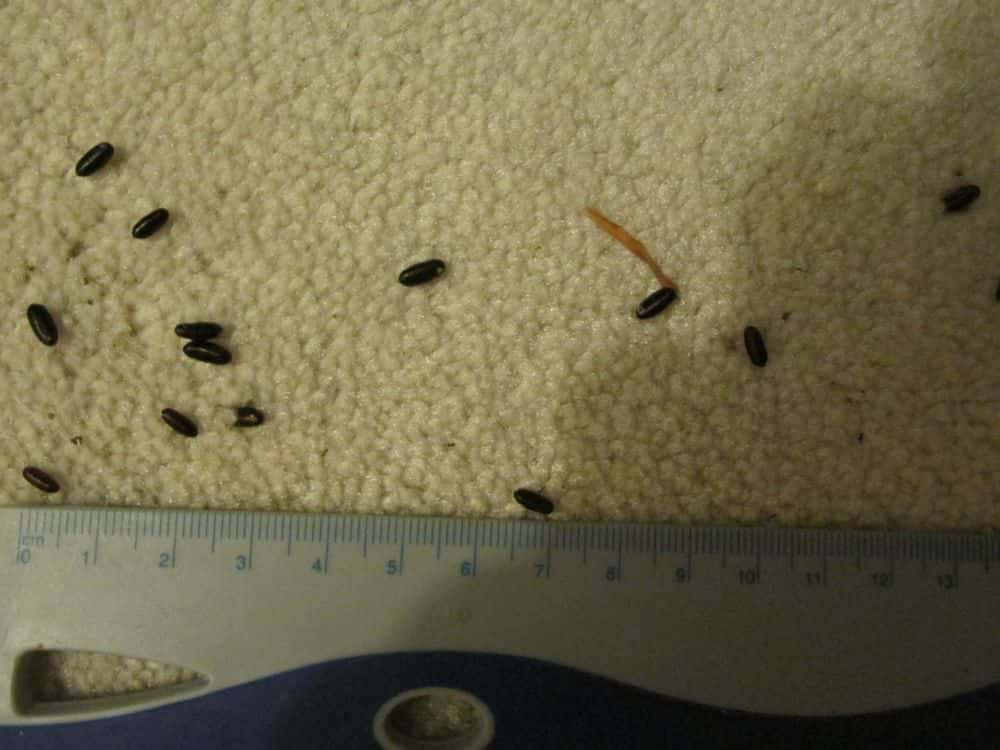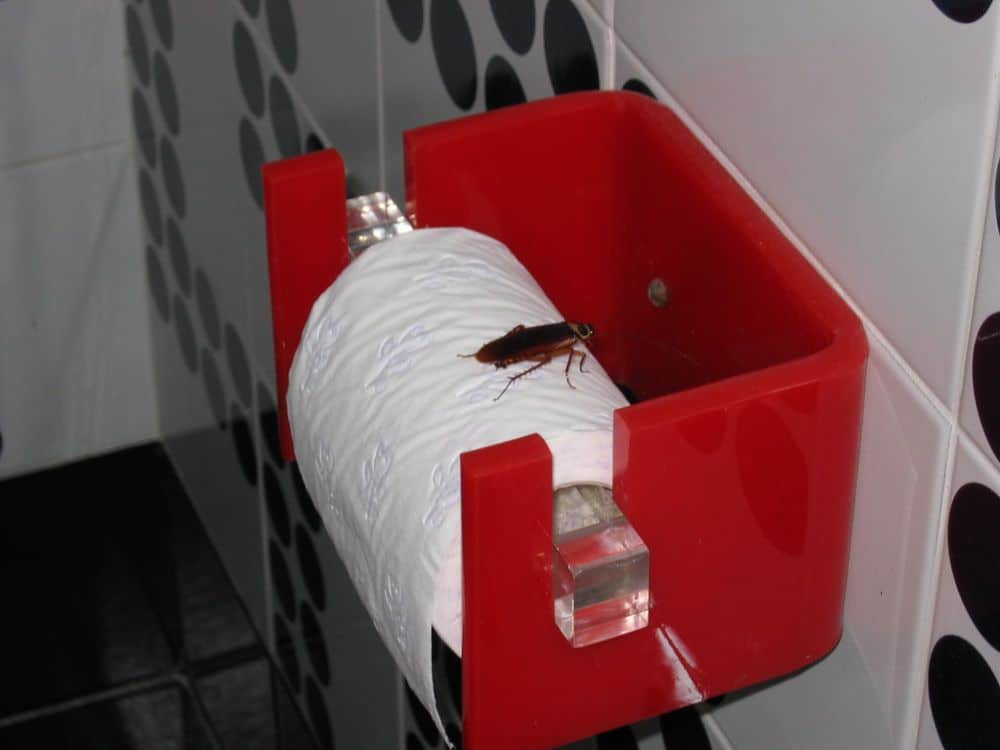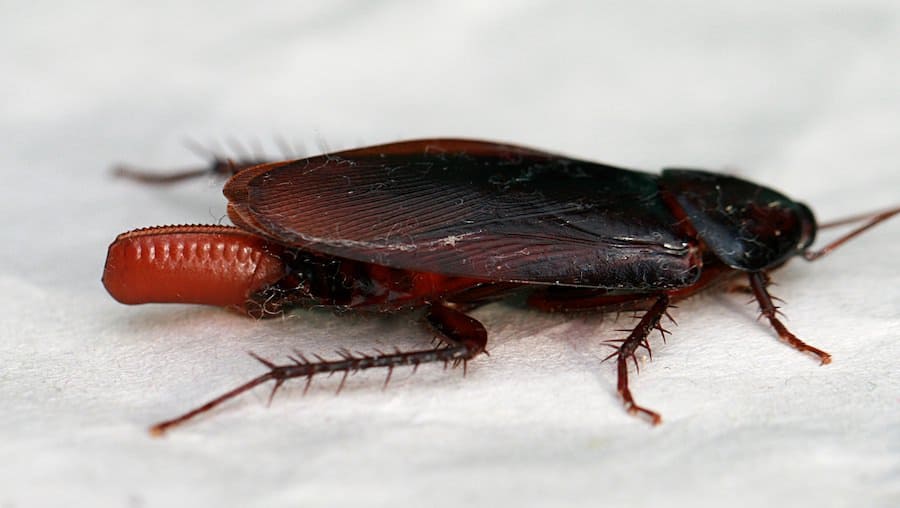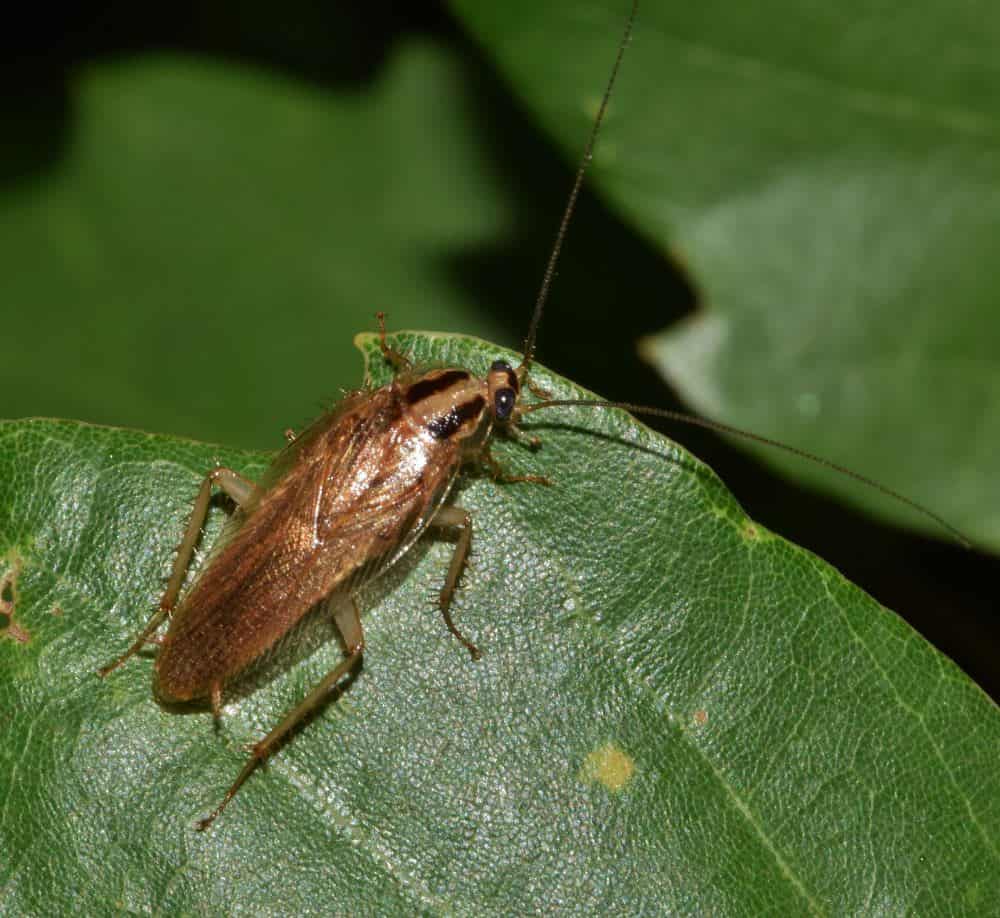Common Types Of Cockroaches
Does the very idea of a cockroach make you shudder in horror and revulsion? Almost certainly because, along with spiders, the roach is the most hated and repulsive bug on the planet. Worse still, there are over 4,000 types of roaches.
Many of us can still vividly recall our first encounter with these spiky, slippery monsters. The roach that fell out of the towel when you were naked in the bathroom, or the one that flew into your hair and gave you recurring nightmares. Thankfully though, only about 30 species like to live around humans.
German Cockroach
The German cockroach (scientific name: Blatella germanica) is a small roach that rarely grows bigger than about half an inch. This type of roach is dark in color, almost black, and has two darker stripes running down its back. It may be small, but it is found all over the world. The German cockroach is the head honcho when it comes to these kinds of pests.
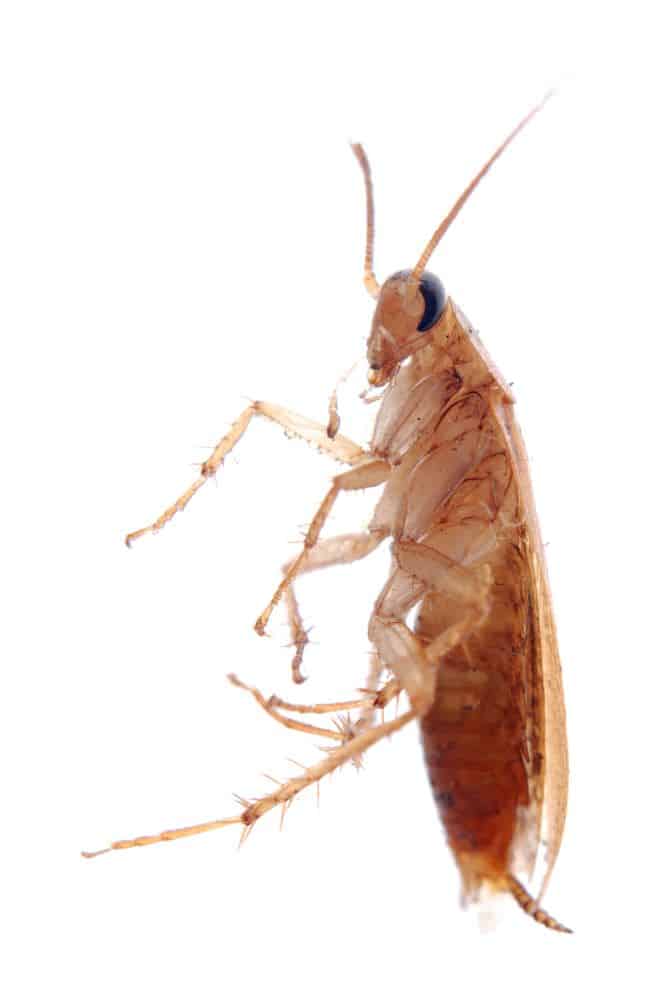
It used to be thought that this little critter originated and was named in Germany. However, scientists now believe it came from warmer areas in the Far East. This is because it dies if exposed to cold weather.
The German roach really excels when it comes to reproduction, and if you get them in your house, they can quickly become a problem. This little creature can go from egg to mature adult in just 60 days. As they have few predators in a human home, they can reach alarming numbers in just a few months.
It is estimated that a pair of German cockroaches, in favorable conditions, could produce 10,000 offspring in a year. If all of them survived and reproduced another 10,000 per pair, you would very quickly be knee deep amongst the critters.
American Cockroach
The American cockroach (scientific name Periplaneta americana) is the largest of the common roaches. Not only is it big, but it’s also a frequent pest in our houses. This is a reddish brown roach that moves very fast when it needs to get out of the way. In fact, this little creature is one of the fastest crawling bugs alive.
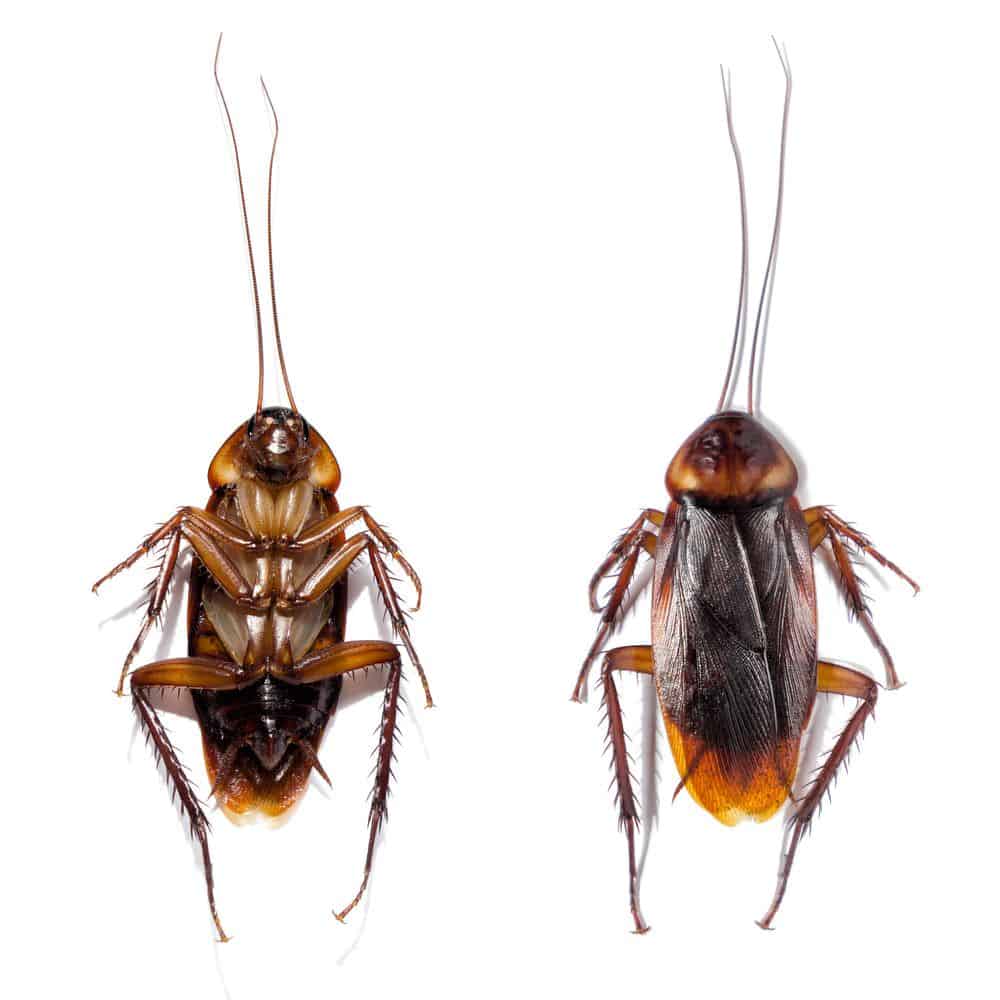
American cockroaches can actually run at speeds of over 200 miles per hour. They can grow up to two inches in length, but are pretty flat, at just a quarter of an inch tall. This makes it easy for them to slide under small gaps very easily.
If you studied biology in high school, you may have dissected a roach. If you did, then the chances are that it would have been this type of roach. American roaches are large and their internal structure is quite easy to see after careful scissor work. You might have noticed it has no skeleton inside, just the tough outer shell to protect and support all the delicate internal organs.
This roach can fly, which makes it even scarier when it thrashes around. It looks huge when flying, especially with its leathery wings open and beating hard. Flying is risky for the roach though, as it then becomes vulnerable to predators. Birds feeding on this type of cockroach help to control its numbers.
The American cockroach eats most things and is especially partial to fermenting and rotting food. However, it is also happy chomping on skin flakes, dirty clothes, and even book pages. It might surprise you to learn that this roach, like all its cousins, is unlikely to do you any serious harm.
A dose of food poisoning is about the worst it can do to you. It’s strange how it scares us and yet it is pretty harmless. Especially when the mosquito, for instance, is far more dangerous (think Malaria), yet we just ignore them.
Brown-Banded Cockroach
The brown-banded cockroach (scientific name Supella longipalpa) is a small roach. This type of roach rarely grows bigger than half an inch long, with the female being even smaller.
It can be identified by the yellowy-brown bands on its back, as well as its small size. It is believed to have originated in Africa, but trade has helped it hitchhike all over the world, and it is now widely distributed in warmer regions.
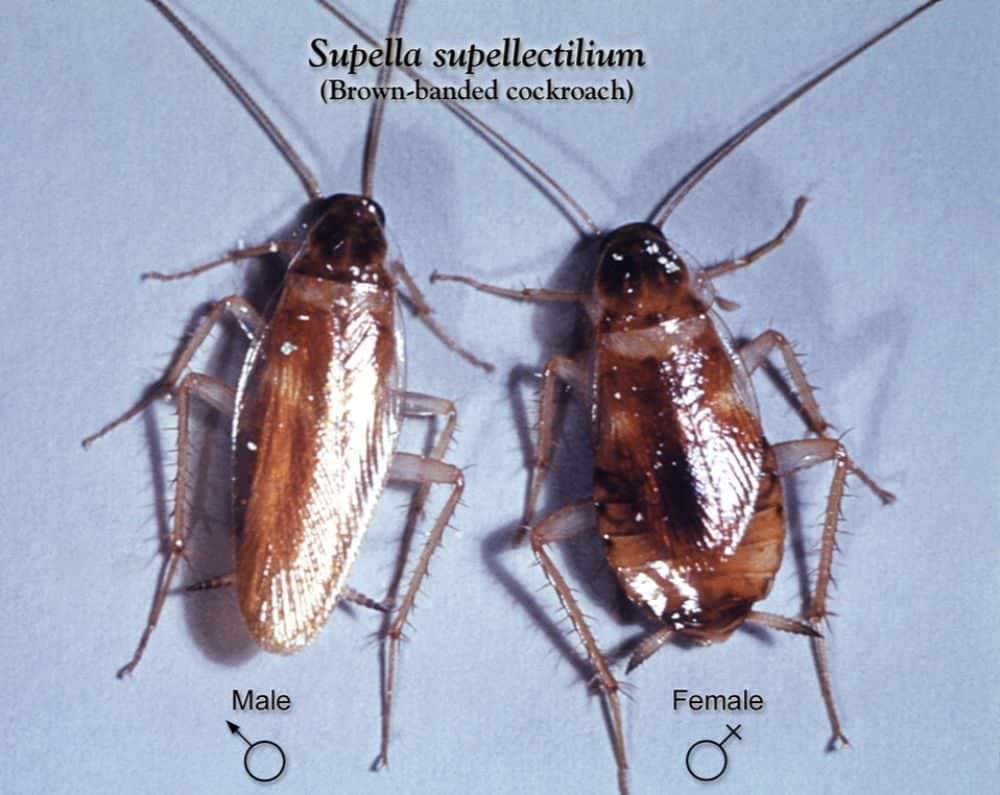
Unlike many of its relatives, which prefer damp and humid conditions, this bug is quite happy in dry conditions. As a result of this, the brown-banded roach often lives inside furniture and in wardrobes. It can spread throughout a house and prefers to hide in bedrooms and inside walls.
This variety is quite common in offices and shops. Brown-banded roaches like these locations because they are happy to feed on pretty much anything they can find. They will eat book bindings, wallpaper paste, and even nylon stockings if food is scarce.
Brown-banded cockroaches are also able to fly, like the American cockroach. However, they only have very limited flight and usually just scuttle around from place to place.
In terms of getting around, the brown-banded cockroach does not let its limited flight hold it back. They gladly take advantage of humans and use us to spread around. This type of roach enjoys finding its way to new places by hiding in furniture and packaging to hitch a ride for free.
Usually, the brown-banded cockroach spends its entire life inside a house or building and never ventures outside. This gives us a clue to their weakness. In the last 25 years, their numbers have declined in developed countries.
This decline in numbers is probably a result of the increasing use of air conditioning. Air conditioners make temperatures too cold for the little critters to thrive. The ideal temperature range for these bugs is around 65 to 90 degrees Fahrenheit.
As you can see, they like a pretty warm climate. It’s because of this that they are mainly found as household pests in warmer regions. However, central heating has enabled them to extend their range and follow their human hosts into colder areas. Nowadays, they are reported as far as Alaska in the North and Patagonia in the South.
Oriental Cockroach
The Oriental cockroach (scientific name Blatta orientalis) is one of the larger roaches. They tend to reach sizes of an inch or more in length and have a black or dark brown, shiny body.
This type of roach is also sometimes called the water bug, a nickname related to its preferred living environment. These roaches need a wet environment to thrive. As a result of this, they are most often found in bathrooms and drains.
Thought to have originated in the Black Sea area, these roaches are now widespread all over the world. The Oriental cockroach is also a serious domestic pest in the Midwest and Southern United States.
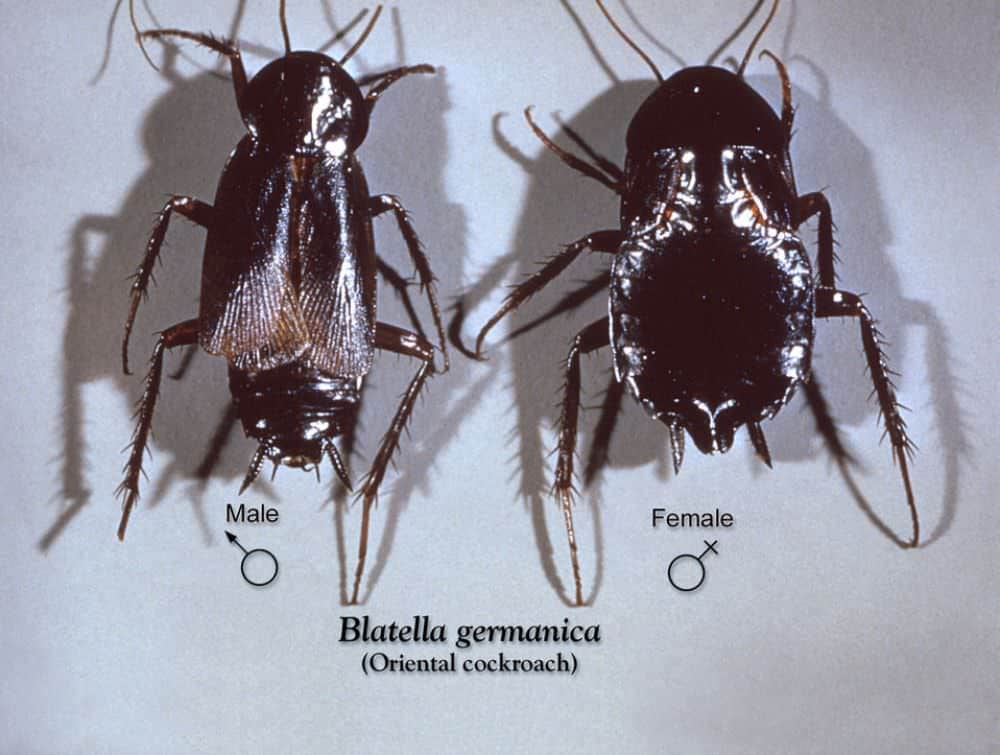
Like most roaches, I am sure you do not want to share your general living space with them. However, getting rid of the Oriental roach is harder than usual. This is because they tend to live in wet places, so insecticide can get washed away or diluted. If the insecticides are diluted, they are less effective.
In order to keep these pests at bay, several treatments are sometimes needed to eradicate them successfully. This roach is not dangerous, however, it has the ability to bite, although it rarely does.
Even if it did bite you, it would be hardly noticeable. The most serious threat you can experience from the Oriental Cockroach is the transmitting of pathogens. Harmful bacteria can easily be picked up by these pests from sewers and decaying water. This is because sewers offer an optimal living environment for them to thrive.
However, the silver lining with this type of roach is that they cannot fly. Their inability to fly makes their spread much slower.
How to Deal With Roaches In The Home
Roach control and eradication improved hugely in the 1990s, when a sweet bait for roach traps was developed. The roaches loved the bait and flocked to the traps, which would successfully kill them. For a while, it looked as though we humans had finally found the ultimate weapon to defeat the roach.
However, in recent years, researchers have found that roaches seem to have evolved. This particular adaptation appears to affect their taste buds. The taste they used to crave in the traps now tastes bitter and horrible to them. They are no longer dying in their millions and, much to our despair, the roach population may soon be on the rise again.
As with all roaches, one of the best ways to avoid an infestation is not to give them what they are looking for. This means never leaving food lying around and being careful to close and reseal all of your food packages properly in your cabinets.
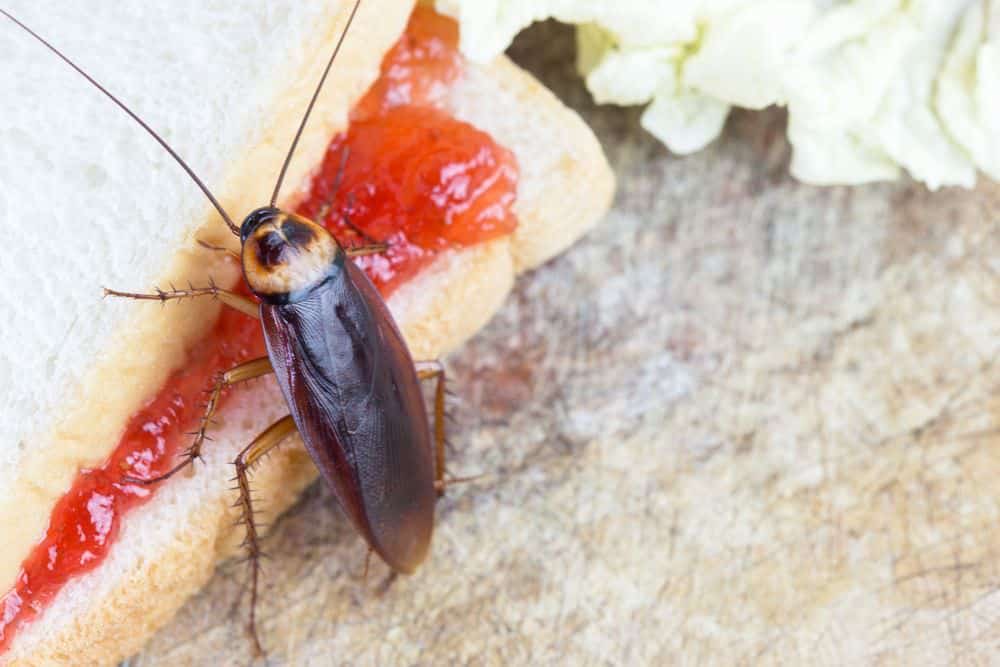
Seal up your house as best you can as well. The best way to do this is by blocking any gaps and filling in cracks that may serve as a front door for these pests. Finally, as a last resort, act fast if you spot one and either lay bait for them, or call pest control.
For the moment, neurotoxic insecticides and cleanliness seem to be the best weapons against the cockroaches. If all else fails, we could always try to loathe them less and live alongside them. However, I cannot imagine that happening anytime soon—not in my household, anyhow.
How Not to Deal With Roaches In The Home
We often stomp on roaches or hit them with a swatter or rolled-up newspaper to kill them. Now, although this might be a satisfying way of getting rid of them, it is actually a really bad idea. If you should happen to squash a pregnant female, you will break open her egg case and some of the eggs will probably stick to your shoe or swatter.
As you walk around your home, the eggs will be deposited in all kinds of places, and some of them will probably suit a baby roach just fine. If you don’t wash the swatter or dispose of the newspaper, the eggs might also survive. Be careful, it might feel good to crush a roach, but you could be doing them a favor without realizing it.

